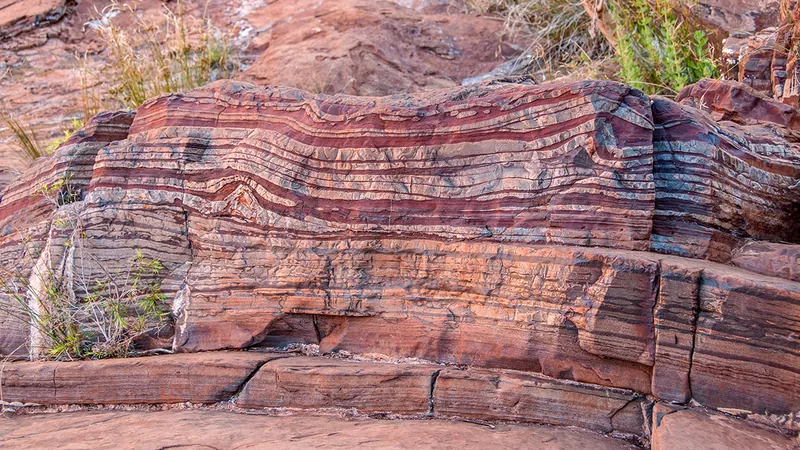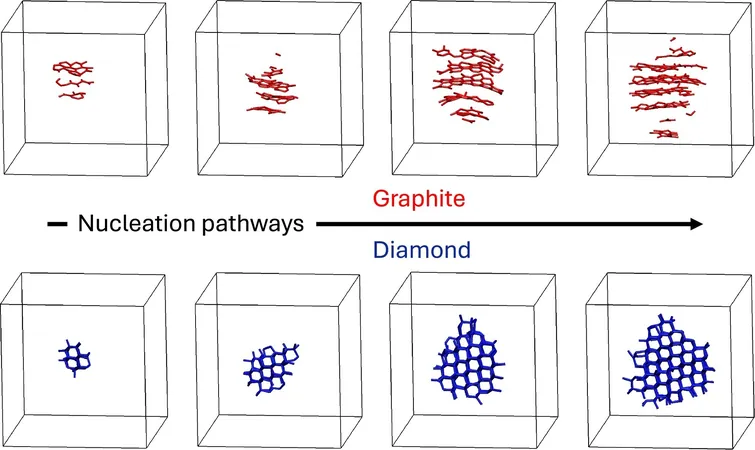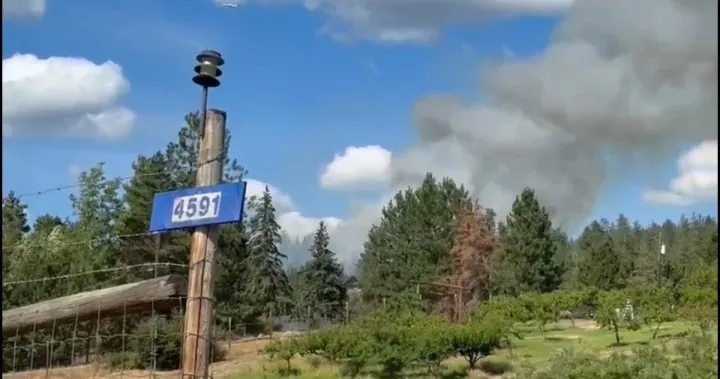
Ancient Microbial Wars: How Bacteria Fought for Iron in Earth's Pristine Oceans!
2024-11-15
Author: Amelia
In a groundbreaking study recently published in *Nature Geoscience*, researchers have unveiled insights into the fierce competition among bacteria for precious iron in the early oceans of Earth. This conflict may have shaped the formation of banded iron formations (BIFs), striking red-hued sedimentary rocks that are remnants of a bygone era, exceeding 1.8 billion years old.
Banded iron formations, with their captivating layers of iron and chert, provide a unique window into the planet’s formative years. Scientists believe these structures were created when microbes oxidized iron in the ancient oceans, leading to its precipitation as iron ore. The newly conducted research suggests that not all bacteria played a cooperative role; instead, various strains battled for dominance, using toxic gases as their secret weapons.
Leslie Robbins, a geobiologist at the University of Regina, emphasized the importance of microbial community dynamics in impacting BIF precipitation in ways previously unnoted. “The study reveals new dimensions to the interactions among these early life forms,” Robbins stated.
In the Archean period, which began about 4 billion years ago and lasted until 2.5 billion years ago, Earth was an unrecognizable world compared to today’s environment. Markedly lower in oxygen, the oceans and atmosphere offered a challenging setting for life. "In the Archean, dissolved iron in the oceans did not oxidize like it does today," explains Casey Bryce, a coauthor of the study and geobiologist at the University of Bristol. This peculiar circumstance laid the foundation for the thriving microorganisms of the time, who were the true architects of BIFs.
Among these, a group known as photoferrotrophs played a critical role. Floating in the shallow waters, these bacteria harnessed sunlight to oxidize dissolved ferrous iron, which would then settle on the seabed and form layers up to 900 meters thick over time. However, skepticism lingers about the roles of other bacteria that may have shared this habitat.
In their pursuit of understanding these complex communities, the researchers designed experiments to examine competition between two types of anaerobic iron-oxidizing bacteria. They put photoferrotrophs against nitrate-reducing bacteria — cunning organisms that react iron with nitrate for their survival.
The results were striking: the photoferrotrophs showed poor growth when competing against the nitrate-reducing bacteria, suggesting they were outcompeted for iron. What’s more, the study found a dark twist — the nitrate reducers were producing nitric oxide, a toxin that was detrimental to the photoferrotrophs. “We were astonished to discover that the ‘winning’ bacteria were inadvertently administering a poison to their competitors,” Bryce remarked.
This study posits that while photoferrotrophs may have dominated early iron oxidation, shifting oceanic chemistry and the emergence of oxygen-producing cyanobacteria initiated a cascade of ecological changes. As these cyanobacteria thrived and oxygen levels rose, photoferrotrophs found themselves pushed into less favorable conditions, struggling to access essential nutrients and iron.
The nitrate-reducing bacteria likely exacerbated this trend, flourishing under the pressure they created. This complex interplay of competition and survival could have contributed significantly to the formation and distribution of BIFs throughout Earth’s early history.
Robbins suggests that further studies could unearth even more about these microbial interactions and their effects on iron oxidation and BIF formation. "We’re only scratching the surface of how these dynamic communities operated," he said.
This research not only adds a fascinating layer to our understanding of Earth's ancient biosphere but also highlights the intricate balance of life, where even the smallest organisms can influence geological processes that shaped our planet. As modern science pushes the boundaries of what we know about our planet's past, who knows what other surprises await us in the sedimentary records of time?









 Brasil (PT)
Brasil (PT)
 Canada (EN)
Canada (EN)
 Chile (ES)
Chile (ES)
 Česko (CS)
Česko (CS)
 대한민국 (KO)
대한민국 (KO)
 España (ES)
España (ES)
 France (FR)
France (FR)
 Hong Kong (EN)
Hong Kong (EN)
 Italia (IT)
Italia (IT)
 日本 (JA)
日本 (JA)
 Magyarország (HU)
Magyarország (HU)
 Norge (NO)
Norge (NO)
 Polska (PL)
Polska (PL)
 Schweiz (DE)
Schweiz (DE)
 Singapore (EN)
Singapore (EN)
 Sverige (SV)
Sverige (SV)
 Suomi (FI)
Suomi (FI)
 Türkiye (TR)
Türkiye (TR)
 الإمارات العربية المتحدة (AR)
الإمارات العربية المتحدة (AR)